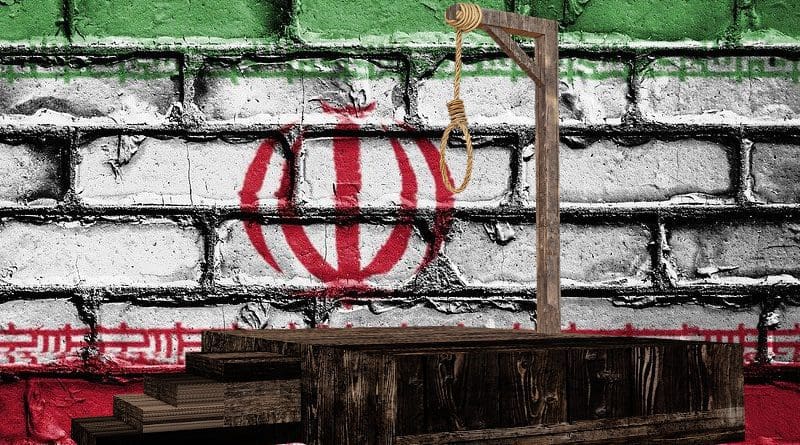Turning Point In Iran As Regime Steps Up Executions – OpEd
By Arab News
By Dr. Azeem Ibrahim*
The clerical regime in Iran is continuing to wash its hands in blood.
Over the weekend, the regime executed two men by hanging. Both were protesters in what has turned out to be the greatest challenge to the regime’s survival since the events of 1979. Like previous executions, their deaths are meant to send an unmistakable signal.
The two, Mohammed Mehdi Karami, 22, and Seyed Mohammed Hosseini, 39, were convicted of killing a member of the Basij paramilitary, a volunteer militia used by the regime to keep order.
These are the details you are expected to believe. The two men were nominally convicted over the death of a militia member named Ruhollah Ajamian on Nov. 3. His story might have been selected as if at random, as happened to former wrestler Navid Afkari, who in 2020 was put to death on spurious charges of violence against authority in earlier protests.
Here is how the clerical regime condemned Karami and Hosseini: Prosecutors said that Ajamian was stabbed and beaten to death with rocks during protests in the city of Karaj, near Tehran. And they connected, by logic unknown, the two protesters to this action.
Neither man received a fair trial, and their convictions were a travesty of justice, as convictions in Iran often are. The question prosecutors ask is generally what can be pinned on the convenient scapegoats brought before the courts, instead of how can justice be done.
But the narrative was there, and the regime took it and ran, going out of its way to associate those it kills for protesting with attacks on authority and its militias.
Again, this is likely untrue, but it is the message the regime wishes to send.
The narrative serves several functions. It tells those in Iran who are still minded to support clerical rule that the protesters are dangerous radicals attacking the current order. But to the protesters, it delivers a couple of different implicit threats. The first is that execution can be ordered against anyone, crimes can be fabricated, and the death penalty carried out without any problem. The second is that if protesters truly start to organize an armed resistance, the violent response from the regime will be out of proportion, even in comparison with the heavy-handed approach so far seen.
Together, Karami and Hosseini represent an escalation in the regime’s violence against demonstrators. Two have already been executed — and many more killed, arrested or wounded on the streets. But for the third and fourth executions to come so close together is an unmistakable signal that things are going to get worse.
This is a pivotal moment for the protests. The Wall Street Journal and other news outlets are beginning to report a fall in the number of demonstrations. This may be true, though it is not inevitable.
What we are seeing instead is a new kind of resistance, one that has been worn down by the tide of regime violence and the drumbeat of murder as seen in these executions — but which nevertheless threatens the survival of the regime.
More people than ever in Iran are voicing their vocal disapproval of clerical rule. These people may never be able to accommodate themselves to the regime again. They will be a continual force of opposition, a permanent block to the regime’s attempts to portray itself as legitimate and popular.
The effects of this may last decades.
But in the here and now, protests are also changing. They may be smaller — we do not know. But they are also becoming more aggressive. Where once clerics had their hats knocked off by rebellious women, now Islamic Revolutionary Guards Corps offices are burning, and officers are being killed by unknown assailants.
If the regime does not manage to frighten protesters away from staging new and more threatening demonstrations, it will be forever weakened. But if it backs its critics into a corner, where it is either passive submission or death, they may fight back themselves, in their own ways.
The tide of killings can only raise the stakes for everyone.
- Dr. Azeem Ibrahim is director of special initiatives at the Newlines Institute for Strategy and Policy in Washington D.C. and the author of “The Rohingyas: Inside Myanmar’s Genocide” (Hurst, 2017). Twitter: @AzeemIbrahim

